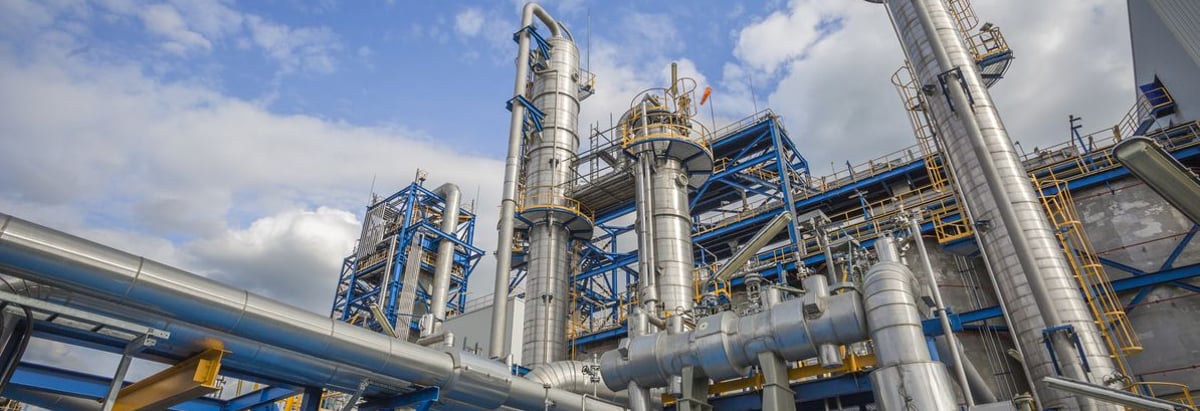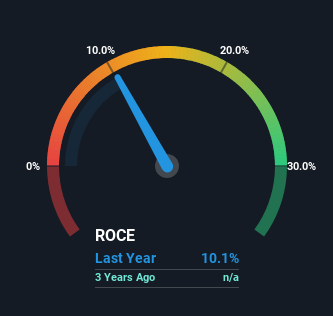- Canada
- /
- Oil and Gas
- /
- TSX:LCFS
There's Been No Shortage Of Growth Recently For Tidewater Renewables' (TSE:LCFS) Returns On Capital

To find a multi-bagger stock, what are the underlying trends we should look for in a business? Firstly, we'll want to see a proven return on capital employed (ROCE) that is increasing, and secondly, an expanding base of capital employed. Put simply, these types of businesses are compounding machines, meaning they are continually reinvesting their earnings at ever-higher rates of return. With that in mind, we've noticed some promising trends at Tidewater Renewables (TSE:LCFS) so let's look a bit deeper.
Return On Capital Employed (ROCE): What Is It?
For those who don't know, ROCE is a measure of a company's yearly pre-tax profit (its return), relative to the capital employed in the business. The formula for this calculation on Tidewater Renewables is:
Return on Capital Employed = Earnings Before Interest and Tax (EBIT) ÷ (Total Assets - Current Liabilities)
0.10 = CA$35m ÷ (CA$420m - CA$78m) (Based on the trailing twelve months to September 2024).
So, Tidewater Renewables has an ROCE of 10%. That's a relatively normal return on capital, and it's around the 9.5% generated by the Oil and Gas industry.
Check out our latest analysis for Tidewater Renewables

Above you can see how the current ROCE for Tidewater Renewables compares to its prior returns on capital, but there's only so much you can tell from the past. If you'd like to see what analysts are forecasting going forward, you should check out our free analyst report for Tidewater Renewables .
How Are Returns Trending?
We're pretty happy with how the ROCE has been trending at Tidewater Renewables. We found that the returns on capital employed over the last two years have risen by 244%. The company is now earning CA$0.1 per dollar of capital employed. In regards to capital employed, Tidewater Renewables appears to been achieving more with less, since the business is using 58% less capital to run its operation. A business that's shrinking its asset base like this isn't usually typical of a soon to be multi-bagger company.
The Bottom Line On Tidewater Renewables' ROCE
In a nutshell, we're pleased to see that Tidewater Renewables has been able to generate higher returns from less capital. And since the stock has dived 87% over the last three years, there may be other factors affecting the company's prospects. Still, it's worth doing some further research to see if the trends will continue into the future.
Since virtually every company faces some risks, it's worth knowing what they are, and we've spotted 2 warning signs for Tidewater Renewables (of which 1 shouldn't be ignored!) that you should know about.
While Tidewater Renewables may not currently earn the highest returns, we've compiled a list of companies that currently earn more than 25% return on equity. Check out this free list here.
Valuation is complex, but we're here to simplify it.
Discover if Tidewater Renewables might be undervalued or overvalued with our detailed analysis, featuring fair value estimates, potential risks, dividends, insider trades, and its financial condition.
Access Free AnalysisHave feedback on this article? Concerned about the content? Get in touch with us directly. Alternatively, email editorial-team (at) simplywallst.com.
This article by Simply Wall St is general in nature. We provide commentary based on historical data and analyst forecasts only using an unbiased methodology and our articles are not intended to be financial advice. It does not constitute a recommendation to buy or sell any stock, and does not take account of your objectives, or your financial situation. We aim to bring you long-term focused analysis driven by fundamental data. Note that our analysis may not factor in the latest price-sensitive company announcements or qualitative material. Simply Wall St has no position in any stocks mentioned.
About TSX:LCFS
Tidewater Renewables
Engages in production of renewable fuel in North America.
Reasonable growth potential and fair value.
Market Insights
Community Narratives




